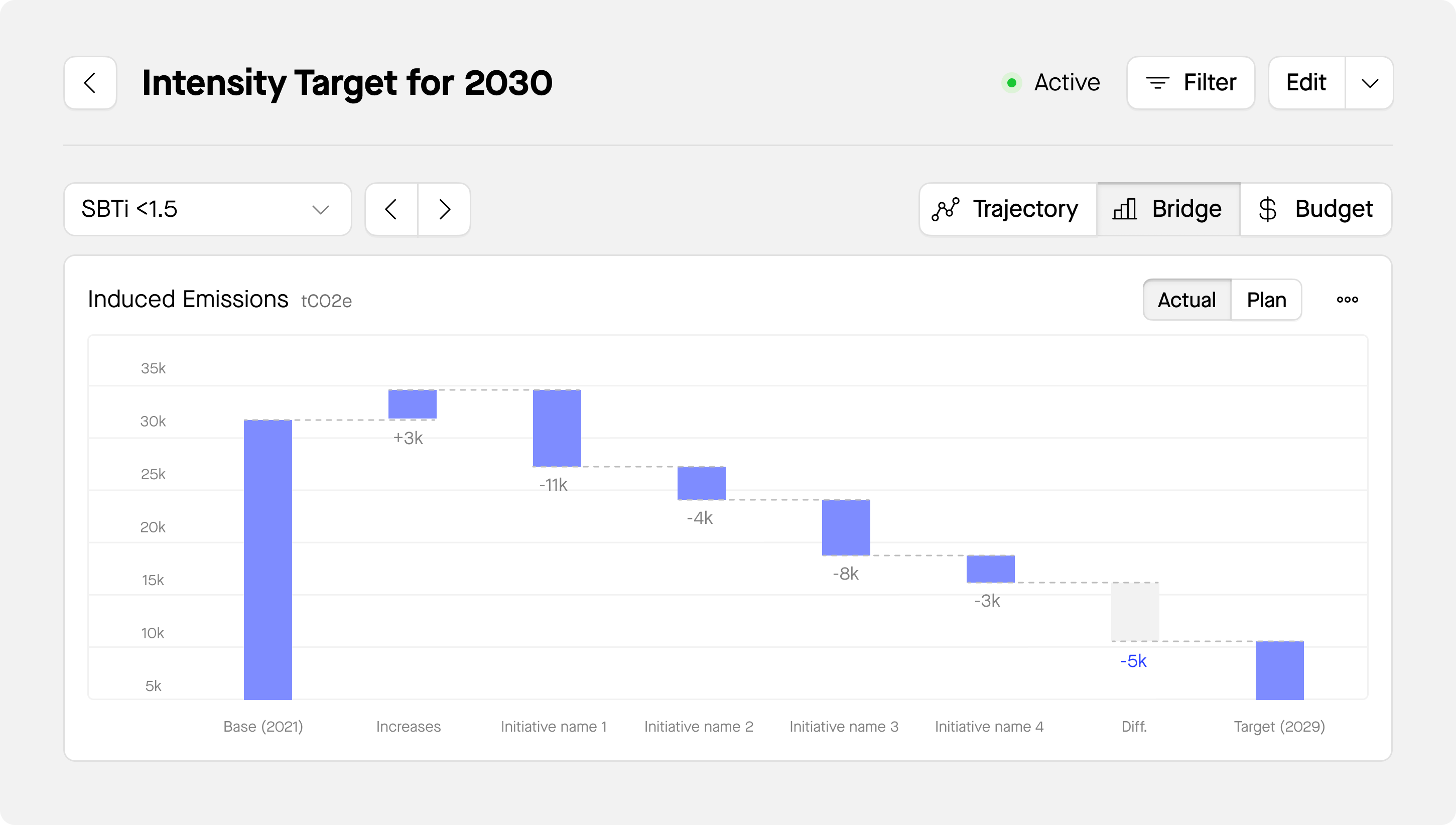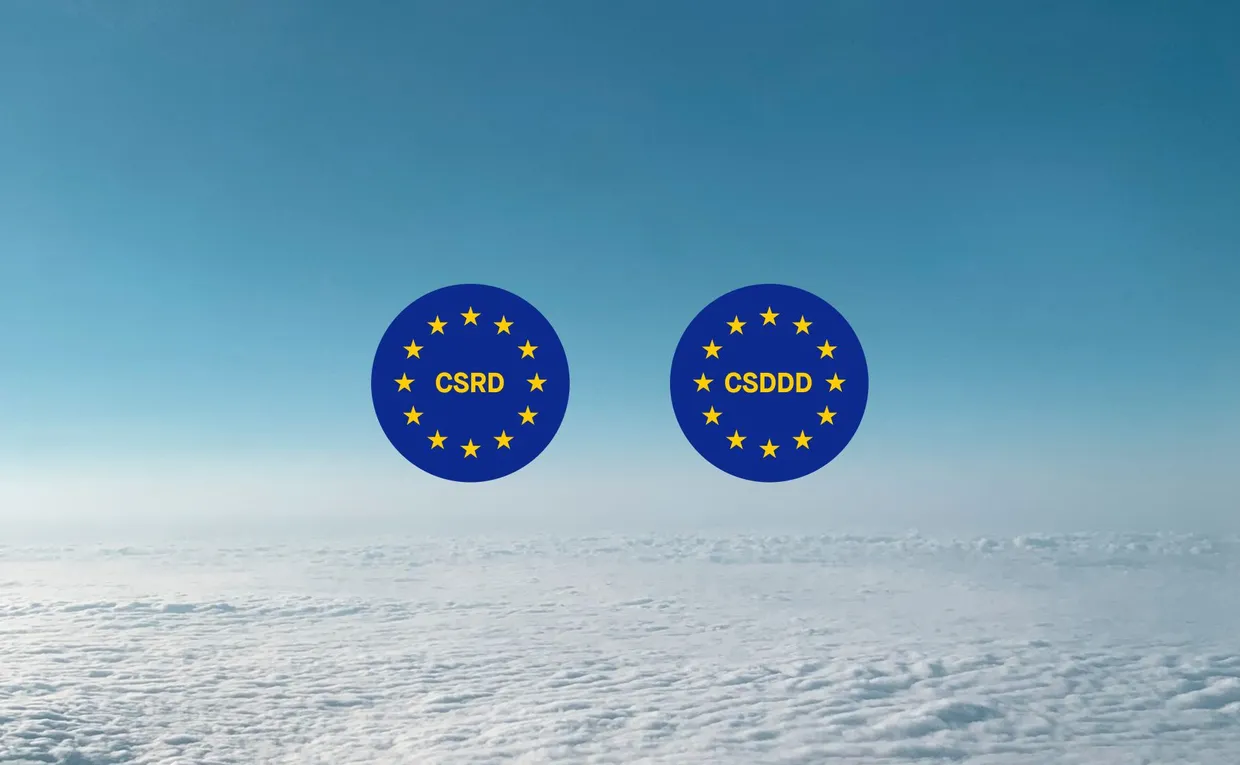We explore how businesses can leverage decarbonization levers to develop impactful and realistic reduction strategies.
In the face of escalating climate change concerns, businesses are increasingly prioritizing efficient carbon emissions measurement. Recent statistics are encouraging, with a remarkable 24% increase in companies publicly disclosing their GHG emissions through platforms like CDP.
However, although many of them have established their Greenhouse Gas (GHG) inventory and initiated carbon accounting, the pivotal question remains: how can they develop an impactful yet realistic decarbonization strategy that resonates with investors, customers, and other key stakeholders?
We explore how businesses can use decarbonization levers to navigate the complex landscape of energy efficiency and bring about a reduced reliance on fossil fuels in favour of renewable energy sources.
Decarbonization levers: A strategic approach to reducing emissions
Decarbonization levers serve as pivotal tools for organizations aiming to reduce emissions across their entire value chain.
These strategic measures encompass a spectrum of actions, from investments in low-carbon technologies to the integration of environmental, social, and governance (ESG) criteria into decision-making processes and even entire business models. Recognizing and effectively utilizing these levers is paramount in developing a tailored decarbonization strategy that address industry-specific needs.
A three-step action plan for reaching emission targets
Decarbonization levers vary across industries, reflecting the unique challenges and opportunities inherent in each sector. In financial services, strategies may involve investing in low-carbon technologies and companies, financing renewable energy projects, and integrating environmental, social, and governance (ESG) criteria into investment decisions. For manufacturing and retail, a focus on energy use is common, encompassing measures such as reducing waste, transitioning to clean power sources like wind and solar, adopting low-carbon production processes, and promoting a circular economy.
Here are three key steps to identifying how best to implement the levers relevant to your business.
Step 1: Assess industry relevance and impact
Begin by understanding the unique environmental challenges and opportunities within your industry. Investigate successful decarbonization projects and strategies adopted by similar businesses. Identify levers aligned with industry characteristics, considering both sector-wide practices and specific challenges. Prioritize levers based on their cost and abatement potential.
Step 2: Conduct a comprehensive organizational analysis
Undertake an in-depth analysis of your organization, considering current operations, future growth plans, and resource utilization. Evaluate your carbon footprint across scopes, identifying emission hotspots. Pinpoint areas where levers, such as low carbon fuels, grid greening efforts, or energy-efficient technologies, can have the most significant impact. Assess the feasibility and alignment of each lever with your business objectives, considering financial considerations and regulatory landscapes.
Step 3: Develop a phased implementation plan
Create a phased implementation plan that accommodates the complexity of decarbonization levers. Prioritize based on feasibility, impact, and alignment with business strategy. Establish clear timelines, milestones reduction targets, and performance indicators for each lever. Consider dependencies and integrate levers into a cohesive strategy, ensuring adaptability to evolving circumstances and technological advancements. Regularly monitor progress and assess effectiveness, making data-driven adjustments.
What are the benefits of implementing effective decarbonization levers?
Implementing decarbonization levers is instrumental for businesses which have made net zero commitments, as these strategic development tools offer a range of impactful benefits. First and foremost, they enable the systematic reduction of greenhouse gas emissions across entire value chains, and are crucial for mitigating climate change and limiting global warming. This in turn leads to:
-
Cost savings: Optimization of energy efficiency and adoption of low carbon technologies result in significant cost savings, reducing energy costs and operational expenses.
-
Regulatory compliance: Proactively implementing decarbonization levers ensures businesses comply with evolving environmental regulations, avoiding penalties and fostering environmental responsibility.
-
Enhanced reputation: Commitment to decarbonization enhances a company’s reputation, attracting environmentally-conscious customers and investors who prioritize achieving carbon neutrality.
-
Innovation and competitiveness: Embracing sustainable practices and cutting-edge technologies fosters innovation, positioning businesses as industry leaders and enhancing competitiveness.
In summary, the adoption of decarbonization levers not only aligns businesses with global sustainability goals by reducing carbon intensity and reaching net zero emissions but also brings about tangible economic, operational, and reputational benefits. It is a strategic approach essential to achieving net zero emissions and contributing to the preservation of natural ecosystems and the broader fight against climate change.
What are some of the implementation challenges?
While the benefits of implementing decarbonization levers are compelling, businesses may encounter several challenges during the implementation process:
-
Data collection complexity: Gathering accurate and comprehensive data on carbon emissions, energy efficiency, and other relevant metrics can be complex, requiring sophisticated measurement systems and overcoming data silos. Here’s where digital tools which enable automated data collection can help drive efficiencies.
-
Policy and regulatory uncertainty: The ever-evolving landscape of environmental policies and regulations introduces a level of uncertainty for businesses aiming to reduce carbon emissions. Navigating these intricacies requires adaptability and ongoing monitoring to ensure compliance and strategic alignment.
-
Supply chain complexity: The intricacies of decarbonizing the entire supply chain can be daunting, especially when managing diverse suppliers at various stages of sustainability. Businesses need robust strategies to engage suppliers, encouraging sustainable practices throughout the supply chain.
-
Behavioral change: Achieving carbon neutrality often necessitates shifts in employee behavior and company culture, representing a significant implementation challenge. Overcoming resistance requires effective internal communication, training programs, and incentives to encourage the adoption of sustainable practices.
How Sweep can help
-
In Sweep’s platform, you can easily identify hotspots or gaps with data-driven visualizations and reports.
-
You’ll also find a “Decarbonization Lever Library” – a meticulously curated catalog of tasks, ranging from major initiatives like energy supplier transitions to specific actions like carpool program implementation. Organized by industry, these predefined levers empower suppliers and facilitate seamless value chain decarbonization.
-
Sweep facilitates real-time collaboration among stakeholders and suppliers to reach joint emissions targets. Share dashboards for transparent progress tracking and swiftly adjust initiatives or introduce new strategies for effective carbon reduction.
Example:
Contact our friendly team today to find out more.




